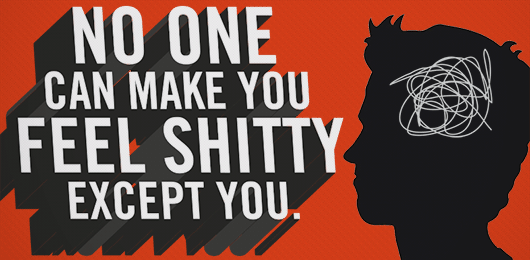
One day, after breakfast she tells you — all sweetness and doe eyed — that she wants to come over and see your place. Uh oh.
To say the least, this is a problem. Your place is nothing like hers. Clothes cover the floor. Dishes, caked with dried cereal and orange juice pulp, stand in precarious piles on your desk, your beanbag chair, your TV. You're not sure what a dead rat smells like, but you were suspicious enough to search for one.
First off, if you do find a dead rat, you'll need more than this guide to get cleaned up. Take the poor little critter outside and call a professional. More likely, however, that putrid smell is nothing more than dirty socks. She'll be here in about four hours. That's just enough time to air out the place and do some laundry, but only if you've read
10 Things an Adult Man Should Know About Laundry … but Probably Doesn't
by Jesse Stern
Most guys want to get through the laundry process spending as little time and money as possible. This is commendable. However, there are a few things you should know. While these tips may cost a few extra quarters at the laundromat, they will save time and money in the long run. For the cost of calling Mom on a pay phone (remember pay phones?), your clothes will last longer and look better. Call Mom anyway. Done? Okay, read on.
Get some good detergent. I personally prefer the biodegradable stuff. If there's a Trader Joe's nearby — um, never mind. Suffice it to say that the clothes go on my skin, so the fewer nasty chemicals the better.
Detergent goes directly in the washer. Liquid detergent can be dumped right on top of the clothes. If you're using powdered detergent, sprinkle it in the running water before you put the clothes in; or make sure it gets submerged, so it doesn't clump.
Two chemicals that are exceptions to the “no chemicals” rule are bleach and starch. Until there's a cure for athlete's foot, there's bleach. But before you dump a bottle into the washing machine, make sure you know what you're doing. If you're from the South, you already know about starch. It's a vegetable by-product — no big deal, and I don't think it's particularly harmful, but it makes your shirts look cool when you iron them.
1. Check the Tag
We're not going to get into all the strange symbols on the tag of a shirt — it's not a physics textbook. However, some tags have actual writing on them with special rules that will make your awesome clothes stay awesome. If it says “hand wash”, “tumble dry low”, or “hang dry”, follow the instructions to the letter. Your clothes will thank you for it.
By the way, if the tag says “machine wash gentle”, it's fine to run a gentle cycle (such as Permanent Press) in the same load with other, tougher clothes.
Most clothes that go beyond the basic cotton or polyester blend have some special instructions. This includes wool, linen, silk, anything expensive or shiny, and anything made from a material you can't pronounce.
2. If it Says “Dry Clean Only”, Get it Dry Cleaned
This Thing is so important we separated it from Thing #1. Dry cleaning is expensive — hence the saying “took me to the cleaners.” But it's worth it. If you put your suit in the washing machine, your suit will never be the same. Ever.
The good news is, unless you have a high-rise corner office, you probably only have a few items that need to be dry cleaned. So don't worry about the extra money. Like I said, it's worth it. As an extra bonus, dry cleaned clothes come back clean, pressed, and looking sharp. You can even take a shirt in to get “freshened up”, which is good to know for that big job interview. I repeat, it's worth it.
Like detergent, some dry cleaners use safer chemicals, and usually advertise it proudly. Use these cleaners, if possible. It's good for the skin, good for the squirrels.
3. Separate Colors
Separating laundry is not just something Mom does to keep busy. Your white shirt and socks may seem white after you wash them with dark clothes. However, they're going to have a dirty gray color when you stand next to that guy who's hitting on your girlfriend. HIS shirt is white. Yours is dingy (rhymes with stingy). Here's how we fix it.
Get yourself a hamper. Ideally, it should have a cover — remember the dead rat smell — and three separate compartments. Put all your WHITE clothes in compartment #1. White means white — not yellow, light gray, cream, off-white or any such. Stripes are okay as long as the article is mainly white. All your non-white clothes should be divided approximately in half: darker vs lighter. Lighter clothes, including anything that might be considered “bright”, go into compartment #2. Darker clothes, including all but the most faded jeans, go into compartment #3. New jeans always go in Compartment #3.
This method also provides an interesting social meter. If you have more clothes in compartment #3 than any other, you are probably maladjusted and antisocial, and should spend more time around people. Too many clothes in #1 means you should cut the hours at your corporate gig, and take an art class or some tango lessons. If #2 contains the bulk, you might consider balancing your time as a youth group leader with a bit of introspection and alone time.
4. Water Temperature
Washing stuff in hot water helps get rid of grease, dust, and fungus. This is particularly good for socks and sheets. Cold water helps prevent colors from “bleeding”, or soaking out in the water. As a general rule, items in Compartment #1 should be washed hot, Compartment #2 is washed warm, and Compartment #3 is washed cold. If that's too complicated, just remember “white hot, cold & dark”
5. Bleach
Use bleach ONLY when washing white clothes from Compartment #1. If you have lots of white clothes with stripes, or colorful clothes with white parts, re-read the above social meter, adjust your behavior accordingly, and get some detergent with “color-safe bleach”.
The bleach does NOT go directly into the washing machine. Instead, it goes into a little pan on the washer's topside. This pan says something like “liquid bleach dispenser”. Obviously, do not put powder in this pan. As the pan says, it's for liquid bleach. Duh.
It's better to use too little bleach than too much. Otherwise, your clothes smell like a swimming pool and wear out fast. That said, fill (or almost-fill) the little pan once, after you've started the water, and the pan will slowly drip bleach into your wash load.
6. The Dryer: Clean the Lint Screen
There's not too much to say about the lint screen. It's a little screen on a plastic frame, usually just inside the opening to the dryer, or possibly in the dryer door. Its purpose is to prevent lint, paper, coins, toy dinosaurs, hair, etc., from clogging up the dryer's exhaust hose. A clean lint screen dramatically cuts your drying time, saving you time and money. Take it out and scrape the lint off before every load. If you have a lot of towels or new stuff in the dryer, clean the screen somewhere in the middle of drying also. If the girl waiting to use the dryer is cuter than your girlfriend, you may choose to clean the lint screen after drying.
7. Put Stuff in the Dryer One Thing at a Time
This just helps everything get dry. Sheets get twisted up in the spin cycle, socks and shirts get tangled together. Enough said.
8. Don't Overfill Washer or Dryer
While you may be inclined to save a few quarters by stuffing things into the washer or dryer, this method has many opportunities to go awry. An overfilled washer can become unbalanced. The best-case scenario is it won't wash or spin properly, leaving your clothes soapy and dripping wet. Worst-case, it could mangle your favorite shirt.
An overfilled dryer doesn't have enough air to dry the clothes, and will take much longer to dry. Believe it or not, you will save time and precious quarters by running two medium-sized dryer loads, rather than one stuffed with clothes.
9. Clothes Fade When You Dry Them, so Hang Dry Expensive Stuff
This goes for fancy jeans and shirts with the “new” look, any natural fabric (cotton, linen, wool, silk, etc.) with a shiny or sheeny look to it, and anything you want to keep looking extra fresh. As a general rule, if the article is more expensive than your similar articles of clothing, hang dry it. If you're good at multi-tasking, put it in the dryer for 5 minutes to get the wrinkles out, then hang dry.
Usually, a clothes hanger on a doorknob or shower curtain rack does the trick, but if you have a lot of stuff to hang, get a clothes rack or line. Heavy clothes, like sweaters, should be rolled up in a towel and pressed, to squeeze out any extra water, then dried flat. If you're really serious about your sweaters, get a sweater rack.
10. Starch
If you want to look sharp, iron your shirts. If you live in the South, and you want to look sharp, iron your jeans too. Starch is what makes ironed clothes look cool. Get a gallon of liquid starch and a spray bottle, or a can of spray starch. Both of these are in the laundry section, and are different from cooking starch. Spray a little starch on the area to be ironed, and watch your flat shirt stay flat, your creases stay sharp. Iron and ironing board required.
Tip of the week: Washing your Girlfriend's Stuff
Eventually, you may find some of her stuff in your laundry pile — er, hamper … you did get a hamper, right? Women LOVE it when you return their clothes to them, clean and folded. However, women's clothing takes laundry rules to a whole nother level. Always check the tags, and if you're not sure, be safe: don't wash it.
8-step crash course on women's laundry
- All the above rules apply, but even more so.
- Check and double-check all tags.
- Unless it's jeans or t-shirts, use gentle wash cycles and low-heat dry cycles.
- Hang dry anything that is made from material you wouldn't wear.
- Panties, pantyhose, and bras still need to be separated by color, but they also need to go into a little white mesh bag called a “delicates bag”.
- If it goes in the delicates bag, it also gets hang dried — no dryer.
- Usually, if the tag says “hand wash”, it's safe to wash it in the delicates bag. Usually.
- But not if the tag says “dry clean only” (see Thing #2 above).
















